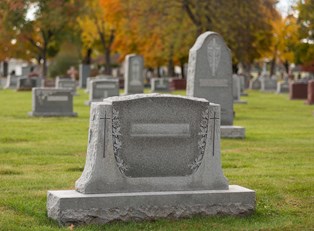The average cost of a funeral can range from $6,000 to 10,000, nearly doubling if you add optional services. You must do what is in your best interest, not what is best for the funeral home.
It pays to shop around and do your homework to ensure you spend a reasonable amount and avoid overpaying on the funeral. Here's what you should know about paying for a funeral.
The Funeral Director
The funeral director is the person who runs the funeral home. He may own the home or he may be an employee in a large chain of funeral homes. He is typically not a minister, although he may lead the funeral service if the family desires. He may have received formal training and licensing for this purpose.
Don’t believe everything directors tell you. They often act as salesmen, encouraging families to spend more than necessary by playing on high-strung emotions, padding prices for their services, and encouraging the purchase of items you don’t really need. Some directors are paid a commission, further motivating them to sell more than is really required.
The Funeral Home
All funeral homes charge a basic services fee, which can range anywhere from $500 to $5,000. The average cost is around $2,000 and typically includes items such as planning the funeral, obtaining copies of the death certificate, storing the deceased’s body, and making arrangements with the cemetery. The funeral director must provide you with a written price list of services offered.
Typical Funeral Costs
Aside from the basic funeral services fee, there are other associated costs that you need to consider:
- The casket. A casket is one of the most expensive items you will purchase unless you opt for cremation. You can often find cheaper options if you purchase the casket from a third party online rather than from the funeral home.
- Funeral flowers. Flowers are a common decorative aspect of funerals. They are often displayed over the casket or on one or more easels. Visit a local flower shop rather than ordering online. You are more likely to get the floral arrangement you envision.
- Burial and Headstone. It costs money to have the casket buried in a cemetery plot, with an additional charge for the headstone or marker that rests at the site. In addition, there is a fee for digging the grave, and there may be a separate fee to purchase a cement burial liner for protecting the casket once it’s buried.
Cost-Saving Funeral Tips
There are many ways to save money on a funeral, and you should cut costs wherever possible. Don’t allow guilt to cause you to spend more money than you can comfortably afford. You’re not letting the deceased down if you choose to spend money wisely. You may save in any of the following ways:
- Skip embalming. This is a process whereby the body is preserved for an extended time period for viewing. However, this process isn’t necessary as long as the body is buried within a short time frame.
- Choose cremation instead of burial. Cremation is a process in which the deceased’s body is burned and the ashes are preserved in an urn or disposed of in another manner. People often have strong feelings about whether to choose cremation. If the deceased strongly opposed cremation, then certainly honor their wishes, but if they were open to the idea, you might consider that a green light. Cremation can save a substantial amount because you avoid the need to purchase a casket.
- Opt for a direct burial. A direct burial involves skipping the body viewing and the funeral service and having a small, private memorial service instead.
Costs for a funeral add up quickly, but it’s not necessary to spend $10,000. Often the costs can be cut in half with a little planning and shopping around. You can honor the deceased with an affordable ceremony that makes sense for your budget.



